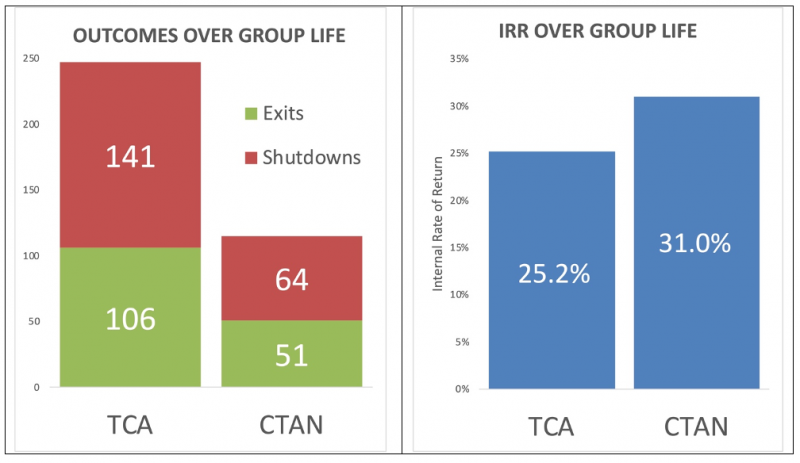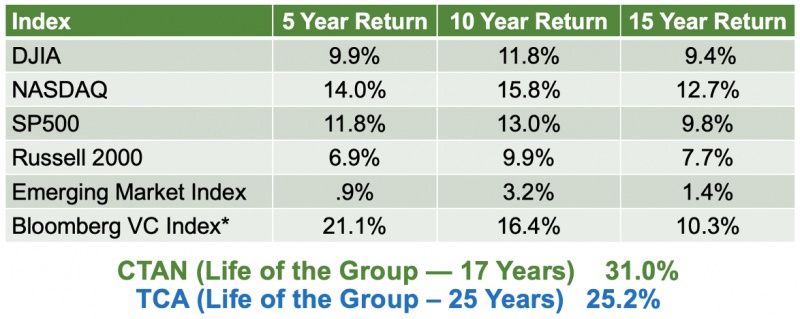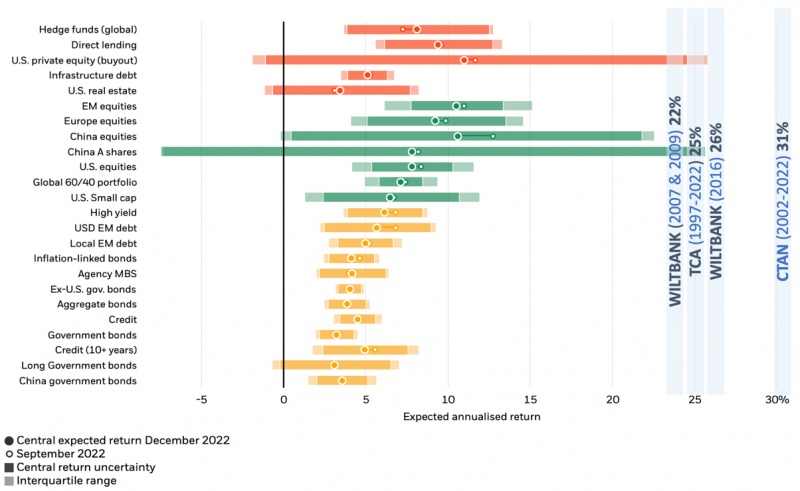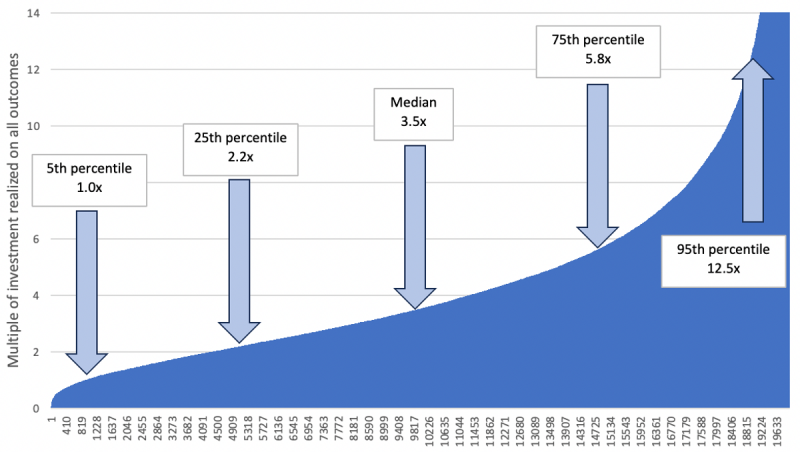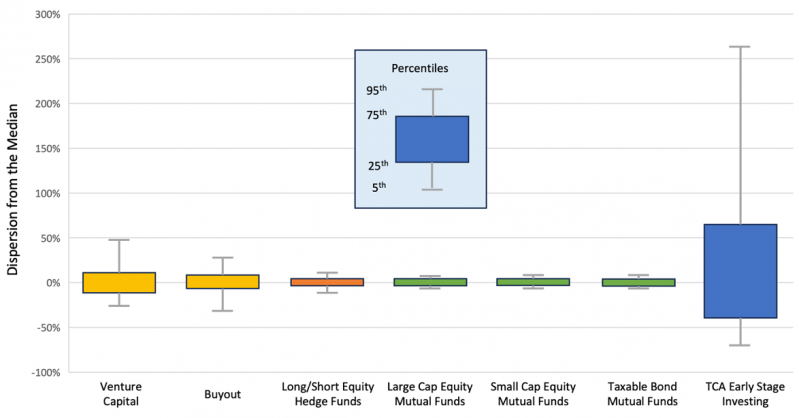 Thursday, May 25, 2023 Thursday, May 25, 2023 Angel Returns Beat All Asset Classes But Pose Greater RiskWe all know that investing in startup companies is inherently risky. Over half of early-stage investments typically fail to return any capital, with the top 10% usually returning 85-90% of all the cash proceeds. The game is won on “grand slam home runs," not “singles." Two of ACA’s largest angel groups have kept track of IRR (internal rate of return) for all outcomes. The IRR for Central Texas Angels Network’s 115 outcomes between 2006-2022 is 31% and the IRR for Tech Coast Angels’ 247 outcomes between 1997-2022 is 25% (assuming one invested equal amounts in all companies): FIGURE 1: THE IRR FOR TECH COAST ANGELS AND CENTRAL TEXAS ANGELS NETWORK Source: 247 Tech Coast Angels outcomes from 1997-2022; 115 Central Texas Angel Network outcomes from 2006-2022. Both angel group portfolios offer statistically significant sample sizes, and three previous large studies by Professor Rob Wiltbank also showed IRR’s in a similar range: 27% (2007 study), 22% (2009 study) and 22% (2016 study). But how does this compare to other asset classes for comparable periods of time? Here is data for a range of other equity investments: FIGURE 2: ANGEL RETURNS COMPARE TO OTHER POTENTIAL INVESTMENTS
*Note: Per CB Insights, 66% of all VC funds yield <10% Blackrock has done extensive modeling of returns by asset class for public equities and these angel returns beat even the highest quartiles for every class of investment covered in the Blackrock Study:
Source: Blackrock Investment Institute, February 2023 (Data as of 31 December 2022); CTAN 2006-2022; TCA (1007-2022), Wiltbank (2007, 2009, 2016) Given this strong performance advantage in the early-stage asset class, why bother with diversification outside the asset class? Because the dispersion of returns is much higher in early stage investing, meaning that even with a diversified portfolio within the early-stage asset class, these higher returns are far from assured. At TCA, 8 companies representing 3% of the outcomes produced 77% of the dollars returned. Using a Montecarlo simulation of 20,000 random portfolios of 25 investments based upon TCA’s first 159 outcomes shows an extremely large range of portfolio returns: FIGURE 4: DISTRIBUTION OF OUTCOMES FOR PORTFOLIO OF 25 INVESTMENTS Source: Based on first 159 outcomes of Tech Coast Angels and random selection of investments using Montecarlo simulation of 20,000 outcomes (including exits and shutdowns) Comparing this extreme dispersion of outcomes to other asset classes shows how much greater is the range of outcomes for the early-stage asset class compared with other asset classes: FIGURE 5: DISPERSION OF RETURNS FOR ACTIVE MANAGERS IN VARIOUS ASSET CLASSES
Key Takeaways:
John Harbison , Chairman Emeritus of Tech Coast Angels and ACA Board Member. Tags: |




